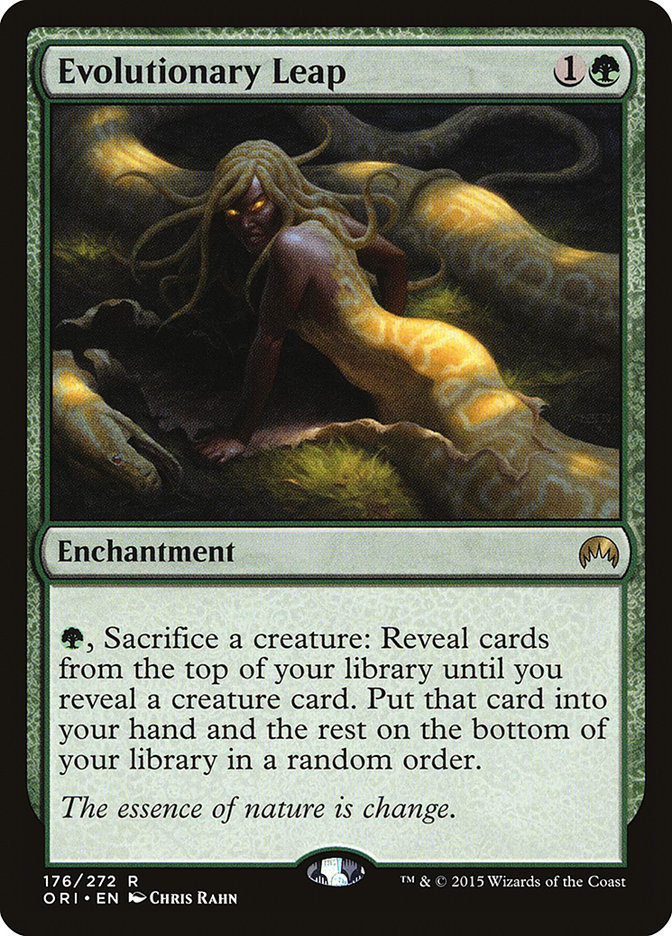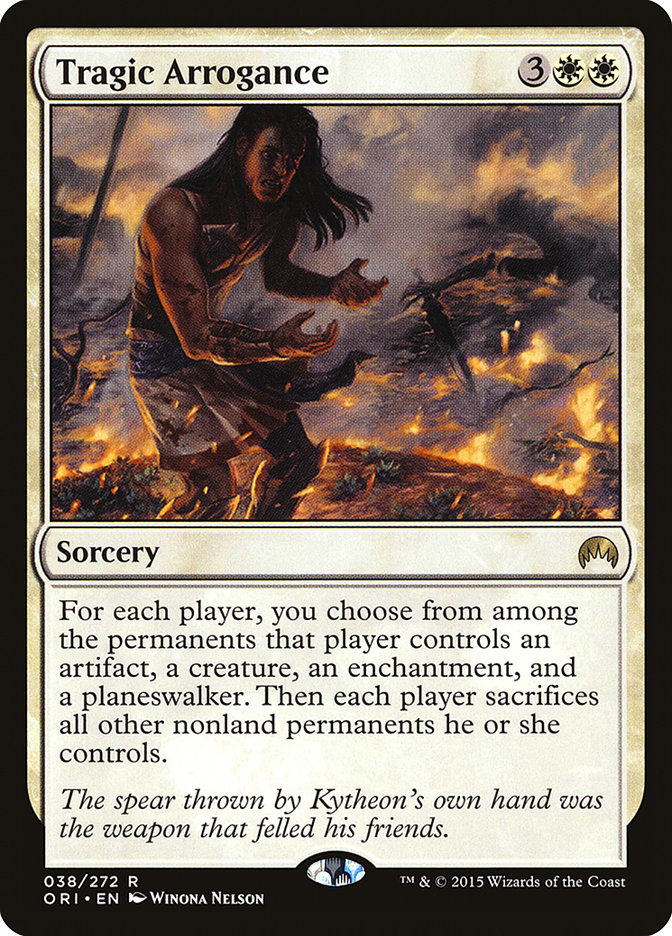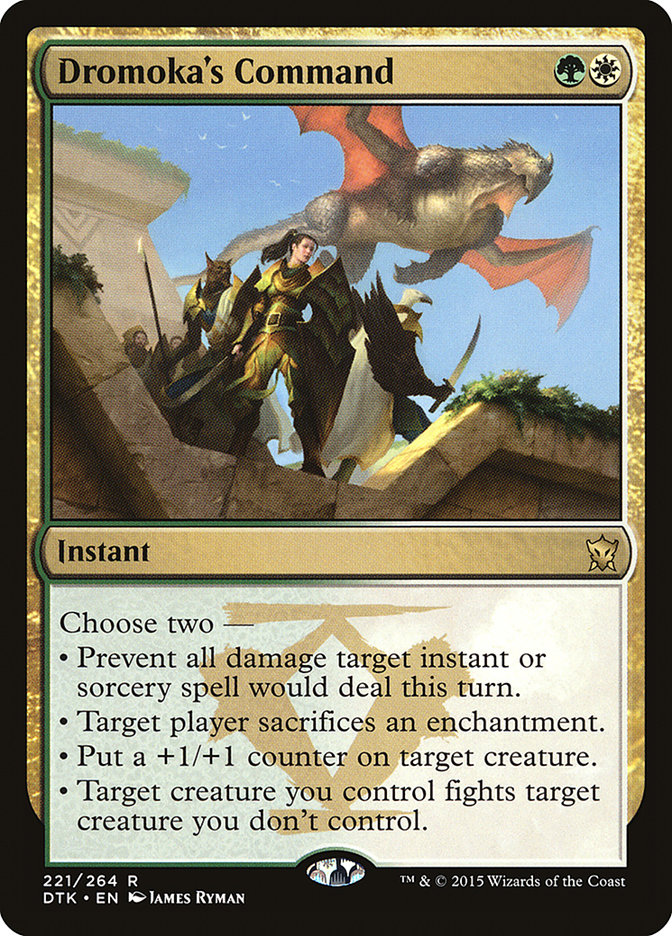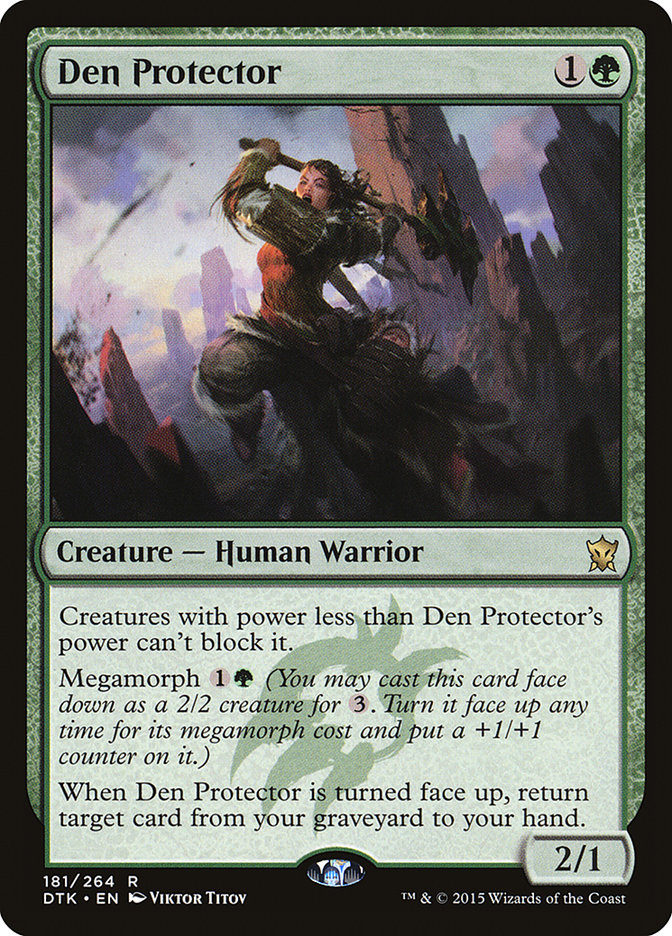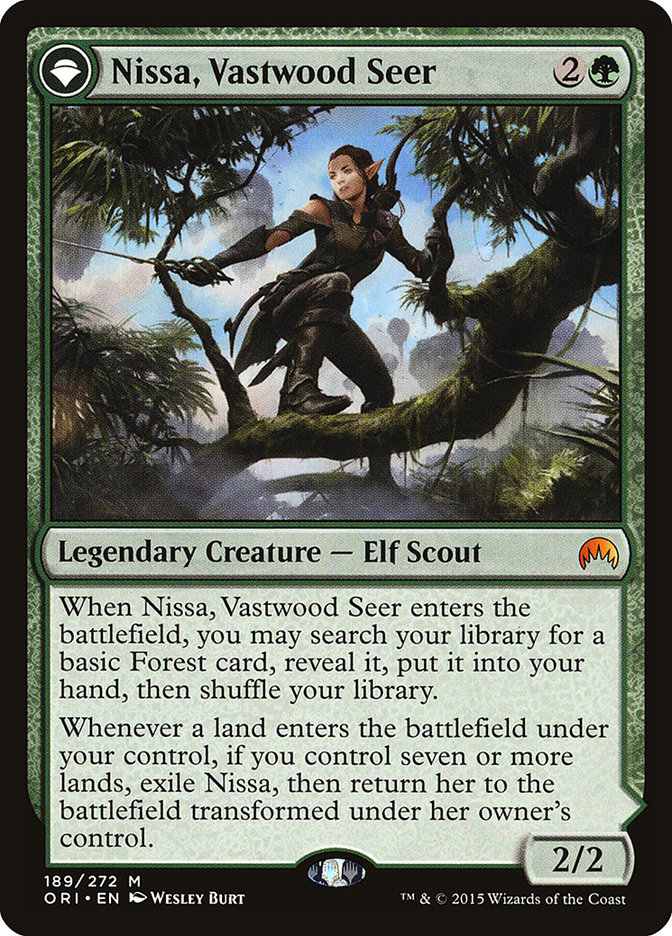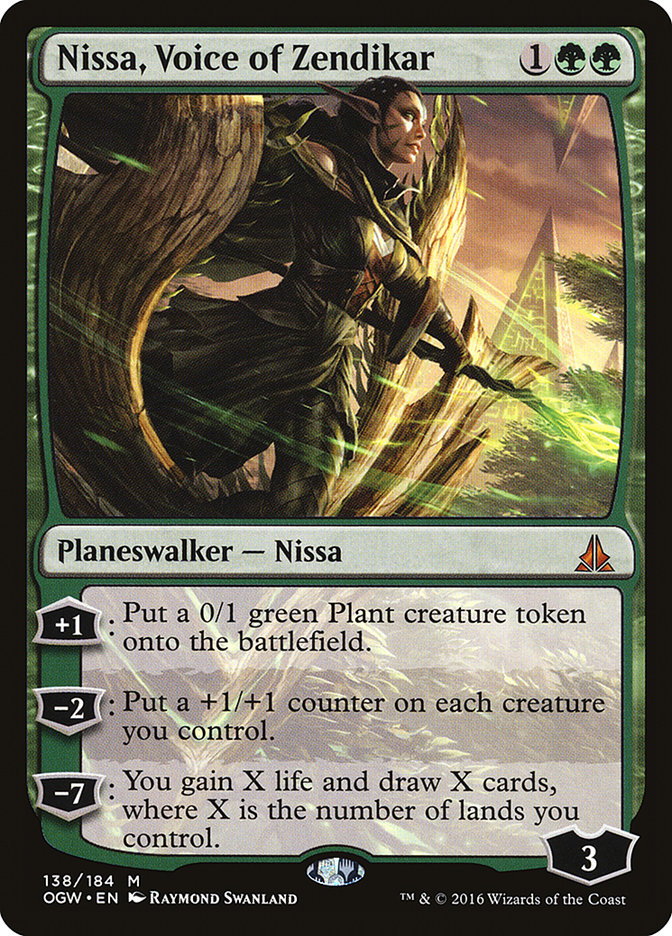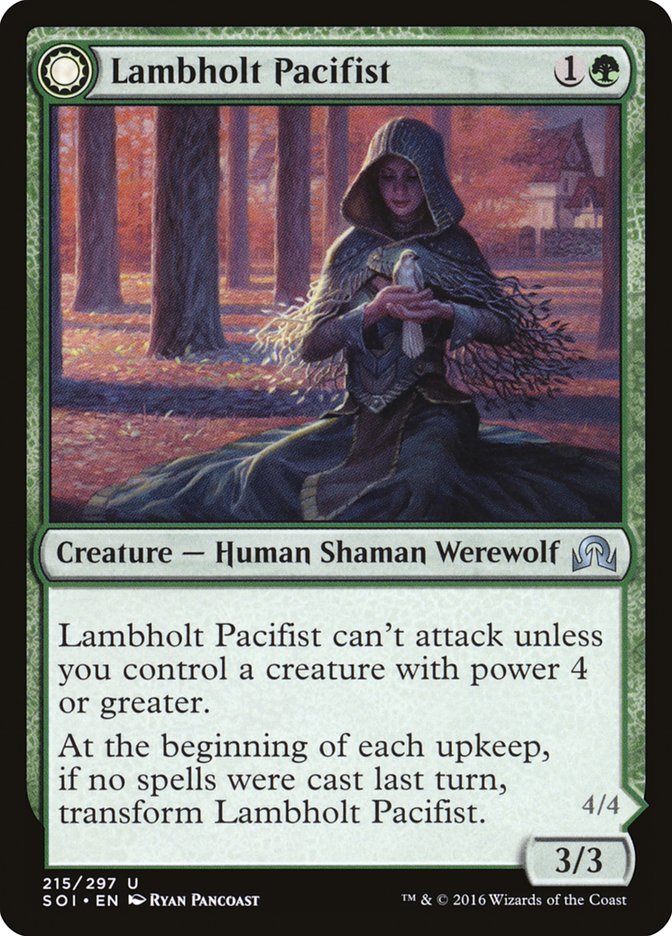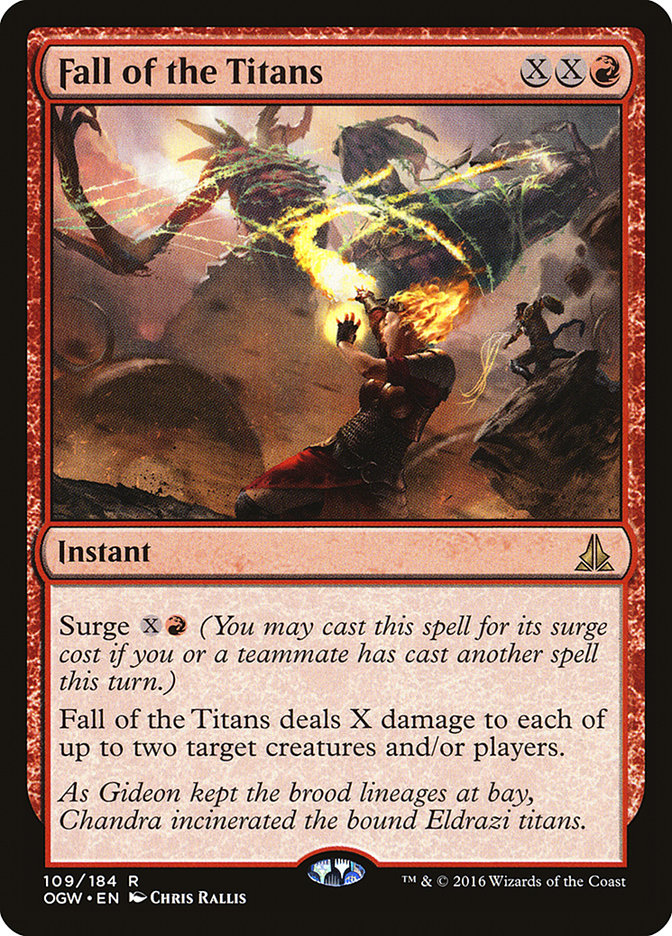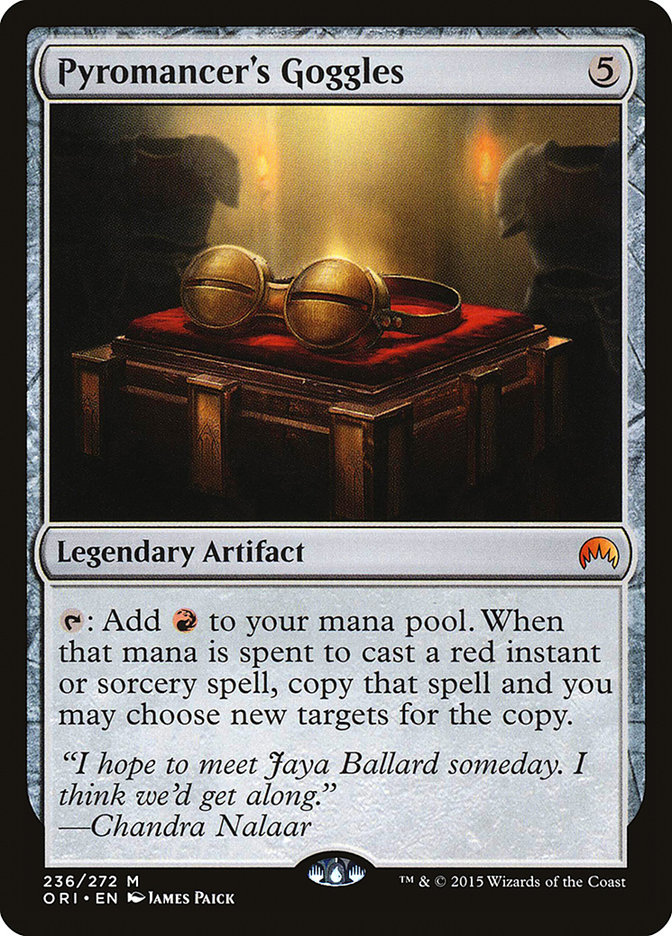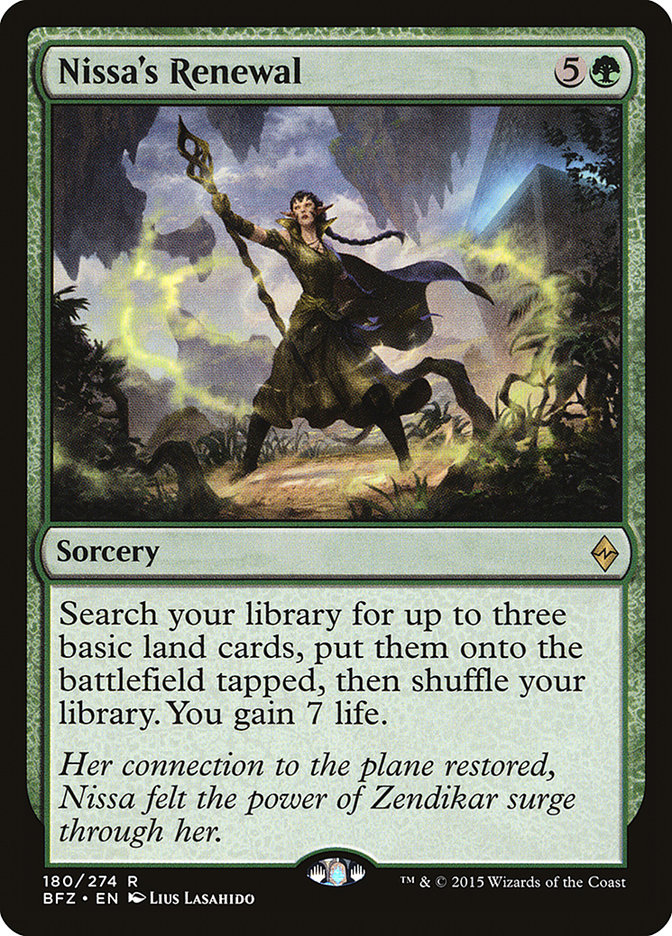Today we are going to look at G/W Tokens (and a few other Standard decks) in a different light.
By now, a more controlling version of G/W Tokens with Evolutionary Leap has cemented itself as the premier version of the deck.
Gerry Thompson made pretty big moves towards “accidentally breaking it” when he sent me a picture of his whiteboard a little over a month ago.
Here’s the deck that I played in #GPNY:
Creatures (12)
Planeswalkers (8)
Lands (26)
Spells (14)

Gerry has made it clear that he thinks the Tragic Arrogances were mediocre, as they represent a plan that he is not interested in participating in with mirror matches. His movement towards Planar Outburst over Tragic Arrogance is a nod to the fact that various Cryptolith Rite and Bant Company decks are full of premier threats that can all pose real problems.
I don’t necessarily disagree with him or his logic, but having access to Tragic Arrogance at the Grand Prix was fundamental to my success.
Many writers have discussed the idea that G/W Tokens is a deck that is thriving on flexibility. Not only can it produce powerful proactive draws that are especially punishing, but it can work its opponents in longer games.
The most important part of this notion is that G/W Tokens is ultimately always able to pace the game in the manner that it deems appropriate. Many of its threats are cheap and an opponent never has many good options when Archangel Avacyn mana is looming. She not only represents dominating a combat step completely, but Dromoka’s Command in conjunction with the marquee mythic can result in a plethora of devastating combinations for an opponent.
Tragic Arrogance adds to this pacing squeeze. My favorite part of the card is its direct synergy with Avacyn herself. If an opponent ever feels forced to “move in,” then the sorcery can reset the game to parity all by itself. A sequence involving an end-step Angel will almost always lead to a completely devastated battlefield for an opponent and a likely two-turn clock in other scenarios. This also incidentally cleans up any of the premier battlefields that a Bant or Rite deck may have assembled against G/W Tokens.
Not only does Tragic Arrogance give G/W more control over how to pace the game, but it can bring the deck back from insurmountable battlefield positions as a reset button.
The package of Den Protector; Nissa, Vastwood Seer; Planar Outburst; and Evolutionary Leap really does give the deck a feeling of “G/W Control.” Further, the nearly universal movement away from Secure the Wastes and the frequent sideboarding out of Nissa, Voice of Zendikar means that G/W Tokens isn’t even really interested in “hammering” its opponents with a powerful Planeswalker curve the majority of the time.
Let me state this, though. Despite the fact that I’m making this argument and will be providing a decklist without Nissa, Voice of Zendikar shortly, don’t misunderstand my logic. The idea that a card is “frequently sideboarded out” and as a result doesn’t belong in the maindeck is flawed.
I also won’t be declaring that this version of G/W Tokens is the best or is superior to how many of the stock lists are currently built. Rather, I think it is important to look at how G/W Tokens is currently structured for the vast majority of matchups that it plays against and also how most folks are going about beating it.
When many of the structural changes made to the deck as of late are pushing the archetype in a consistently controlling direction and that continues to be the plan in majority of matchups after every first game, it might be time to start looking at changing how the deck is built fundamentally. We aren’t talking about simply transforming our deck in a matchup or two, but rather we need to come to terms with the fact that G/W Tokens is simply evolving.
Tom Ross just picked up his second SCG Tour® win in a row by getting under G/W Tokens and punishing it. It is also no surprise that others are finding that this is the best way to beat the deck due to how difficult it is to “out-midrange” or even “go bigger” in the majority of cases.
Nissa, Voice of Zendikar isn’t accomplishing much when the deck isn’t able to gain traction on the battlefield. A couple of chump-blocking Plants aren’t going to get anywhere against the swarms of Humans and a constantly crumpling battlefield position also means that Gideon, Ally of Zendikar is unlikely to get multiple activations and stabilize the game without additional help.
Tragic Arrogance is another way to punish this movement toward trying to blitz out G/W Tokens, and yet again, this deckbuilding decision will force Humans players into yet another squeeze of how to pace their threats appropriately.
I also need to make it clear that I don’t believe cutting Nissa will ultimately harm many of the good matchups that G/W Tokens already has. It has so many additional tools and sticky threats that oftentimes replace the Voice of Zendikar from the sideboard that it may even be a net positive across the spectrum of Standard.
Anyway, I’ve droned on long enough. Let’s look at an example of what I’m proposing as an experimental build of G/W Tokens:
Creatures (16)
Planeswalkers (4)
Lands (26)
Spells (14)

The Changes
Mana
Without Nissa, Voice of Zendikar or Secure the Wastes, I think it’s time to remove Westvale Abbey. I won’t suggest that there isn’t a small hit in power here and Ormendahl has won a few games for me, but I’ve been witness to many more scenarios where a G/W Tokens player stumbles on white mana than spiking wins off Westvale Abbey.
Now that there are no more GG cards in the deck and Nissa, Vastwood Seer helps to pick up the slack, I like the movement toward an equal split of Forests and Plains.
Creatures
Nissa, Vastwood Seer is now in the maindeck. She is a fantastic threat against control and midrange both early and late, bridges the deck beautifully into the mid-game, and is one of the best cards to have in our deck with Evolutionary Leap. As an incidental body, she trades early far more effectively than Plants can gum up the works, and she does just fine at wielding the wrath of a Dromoka’s Command.
The Vastwood Seer is just fantastic.
Den Protector is a holdover from Gerry’s last list, but I do just want to touch briefly on the fact of how good Den Protector is at assassinating opposing planeswalkers in G/W Tokens mirrors. Having that weapon at our disposal in addition to all of her other utility and being a little bit more insulated from her ourselves now is a nice bonus.
I’ve already devoted the majority of this article to talking about the card. We will talk about it in a moment in relation to our sideboard, though.
The Sideboard
Like I said previously, now that we are effectively “pre-sideboarded,” we need to figure out ways to directly attack what folks are trying to do to beat us. This is most notably now going under “Tokens” with Humans or other aggressive strategies.
Lambholt Pacifist and Silkwrap are certainly great ways to lower our curve while presenting a card that trades favorably for many threats out of Humans.
I also have still included two copies of Planar Outburst. I think it’s important to understand that there are likely to be several scenarios where we will be directly substituting Arrogance for Outburst. Despite the fact that this might sound hypocritical when I’m advocating cutting NIssa, Voice of Zendikar, we have to again realize that we are starting to move G/W in a fundamentally different direction.
While Tragic Arrogance is a lot more flexible, Planar Outburst is still the no-nonsense sweeper when we want that effect. It isn’t unreasonable to see scenarios where they would be paired and Avacyn would be trimmed as well.
I do want to touch briefly on the fact that I love Gerry’s inclusion of Knight of the White Orchid as a supplemental threat or defensive tool that helps to fight G/W’s scariest war: mana.
This deck has no shortage of mana sinks and effective ways to use many lands, including Nissa, Vastwood Seer; Evolutionary Leap; Den Protector; and the multitude of expensive cards. Stumbling is certainly one of the biggest fears for me in Standard right now, and this is just another small deckbuilding nod to preventing that reality as much as possible.
Again, I do want to present the disclaimer that this is not necessarily the de facto best version of G/W Tokens, but I think that it would be foolish to not think about how we can shape the entirety of G/W’s 75 to be consistent with the current trends in Standard.
Nobody seems to be able to effectively go toe-to-toe with a post-sideboard G/W deck firing on all cylinders in its respective matchups, and it would appear that those who are trying to fight the deck are doing so in a fairly linear way that we can better prepare the archetype for.
Are there some tradeoffs being made by cutting Nissa, Voice of Zendikar? Absolutely, but I have my suspicions that they are ultimately negligible.
More More More
I hope that you aren’t too tired of hearing about G/W Tokens, as the best deck will likely hold that throne until the release of Eldritch Moon, but if you are, then I do have a few more Standard thought experiments. This really all resulted when my editor posed question number two to me in last week’s Fact or Fiction. I don’t necessarily believe that there will be some off-the-radar Standard deck that appears between now and the Prerelease, but there are still a lot of ways to approach existing powerful shells.
Just like I’ve approached G/W Tokens in this way today, I have a few other ideas I’ve been pondering.
Let’s start in Todd Anderson’s wheelhouse:
Creatures (5)
Planeswalkers (2)
Lands (27)
Spells (26)

The success of U/R Eldrazi recently had me intrigued. After playing with the deck there were a few key takeaways:
Drowner of Hope and the inevitably of Ulamog, the Ceaseless Hunger are very powerful.
Countermagic is extremely effective right now.
The supporting cast of the deck is fairly weak.
Further, the incidental small creatures that Goggles decks always played were basically just cannon fodder and other than working toward Fall of the Titans + Pyromancer’s Goggles, there wasn’t too much of a killer punch in the archetype.
I think this blend of the two archetypes combines the power of U/R Eldrazi’s early- and late-game while and the awesome midrange aspects of Goggles.
The swap of various velocity spells and Hedron Archive for Magmatic Insight and Tormenting Voice is fairly elementary when both archetypes are already interested in playing a lot of lands, but there is some admitted tension with the sorcery-speed spells and countermagic, even if they are fairly cheap. When this is further stressed with enters-the-battlefield-tapped lands, it might be a bit of an issue, but in theory I like the spread of spells in this deck a lot.
Although there are fewer raw acceleration lands for Ulamog, the Ceaseless Hunger than in Eldrazi, Drownyard Temple can still function to put you ahead of an opponent and Pyromancer’s Goggles does produce mana! I also like that this deck makes better use of Kozilek’s Return than either of the two decks did previously. It can be easily discarded if Goggles wants to put it in the bank later for “Flashback” without having to waste three mana.
The last deck I want to look at incorporates a newcomer to Standard.
When Prism Ring suddenly becomes the staple of an archetype, you have to look at the world differently. How could we maximize this card in another engine?
Creatures (3)
Lands (26)
Spells (31)

On the surface this deck isn’t many raw cards different from Pantheon’s G/B Seasons Past deck from #PTSOI. That being said, Prism Ring offers the deck a different dimension.
When I watched their deck in action at the Pro Tour, my first thought was that Nissa’s Renewal looked like the workhorse of the deck. It not only offered additional resources to keep the deck’s loops going, critically it bought a ton of time. Often the seven life was a functional full turn of reprieve.
Prism Ring does the same thing in a sleeker way that allows G/B to keep casting spells that oftentimes won’t affect the battlefield directly. Read the Bones becomes a lot less painful, and at some point while you’re going off completely with Seasons Past, your opponent will never be able to kill you, similar to how the Mono-Blue Prison deck functions.
The difference is that this is a deck full of interaction, while the Prison deck is often forced to take risks that sometimes don’t pan out. Should they run into a key Negate or Dromoka’s Command at an inopportune time, their entire plan can crumble.
G/B Seasons Past’s ability to play a slower game that involves killing its opponent’s creatures and clearing the way with discard spells, all the while drawing cards and generating a life buffer, means that you won’t be put under lethal pressure as often.
Again, this is just a small tweak on an existing archetype, but perhaps a critical one that shouldn’t be ignored.
It’s true that there are many established titans of Standard right now, but there’s always room for innovation. While these tweaks may not translate into direct tournament success, it is important to keep in mind what options we have available to us in deckbuilding. It wouldn’t shock me if I registered zero copies of Nissa, Voice of Zendikar at #GPPITT this weekend.


